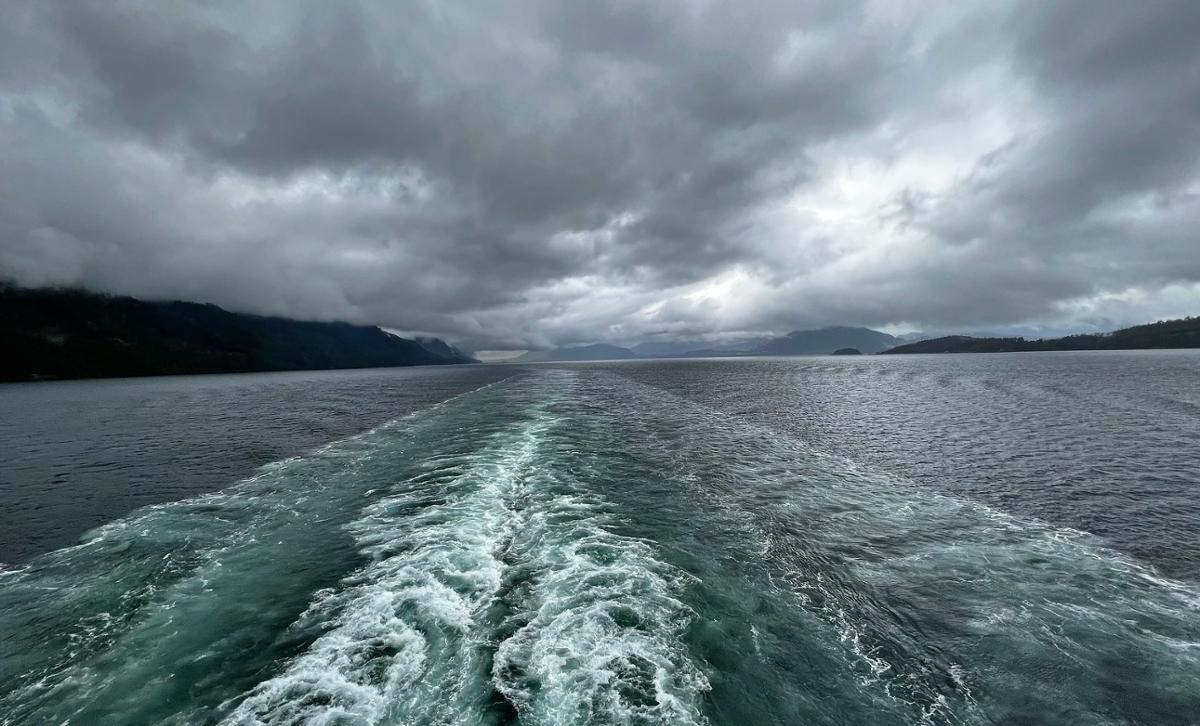Y: A smooth wake, on today's Moment of Science. Don and I are on a fantasy cruise. The sun has set, and we're standing on the rear deck, looking at the reflection of the moon in the glassy, smooth wake of the ship.
D: Hmmm . . . That's odd. You might expect a ship's wake to be more agitated than the surrounding water. Instead, it's a smooth path through the waves that can extend for miles behind the ship. How come?
Y: The wake starts out smooth because the passage of the ship destroys whatever wave patterns were there before the ship came through. The reason it stays smooth has to do with tiny organic molecules--such as decomposed plankton--on the surface of the water. There are always some organic molecules on the ocean's surface, but as the ship pushes along, it plows these molecules to the sides. This leaves the wake something like a winter road that has just been snow-plowed, with piles of snow on both sides of the road. The center of the wake is relatively free of organic molecules, but the two sides each have an accumulated pile-up. These stretch behind the ship on either side of the wake like ribbons.
D: Well that's interesting, but how does this keep the wake smooth?
Y: It turns out that a thin ribbon of organic molecules on the surface of water is really good at suppressing small waves. These two ribbons, on either side of the wake, act like guardrails, preventing small waves from entering and crossing the wake.
D: So that's why the wake stays so smooth and glossy-- microscopic ribbons of decomposed plankton!










